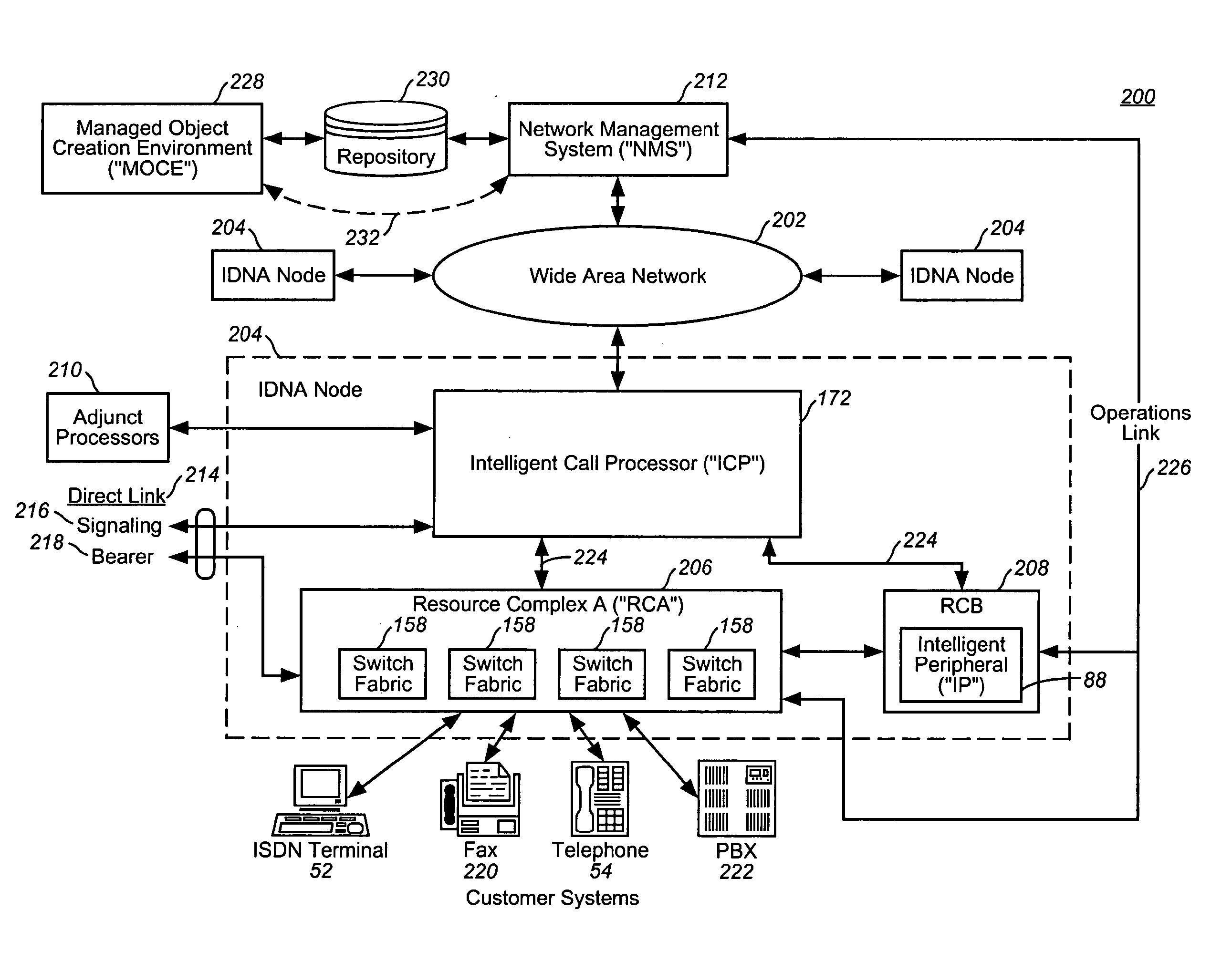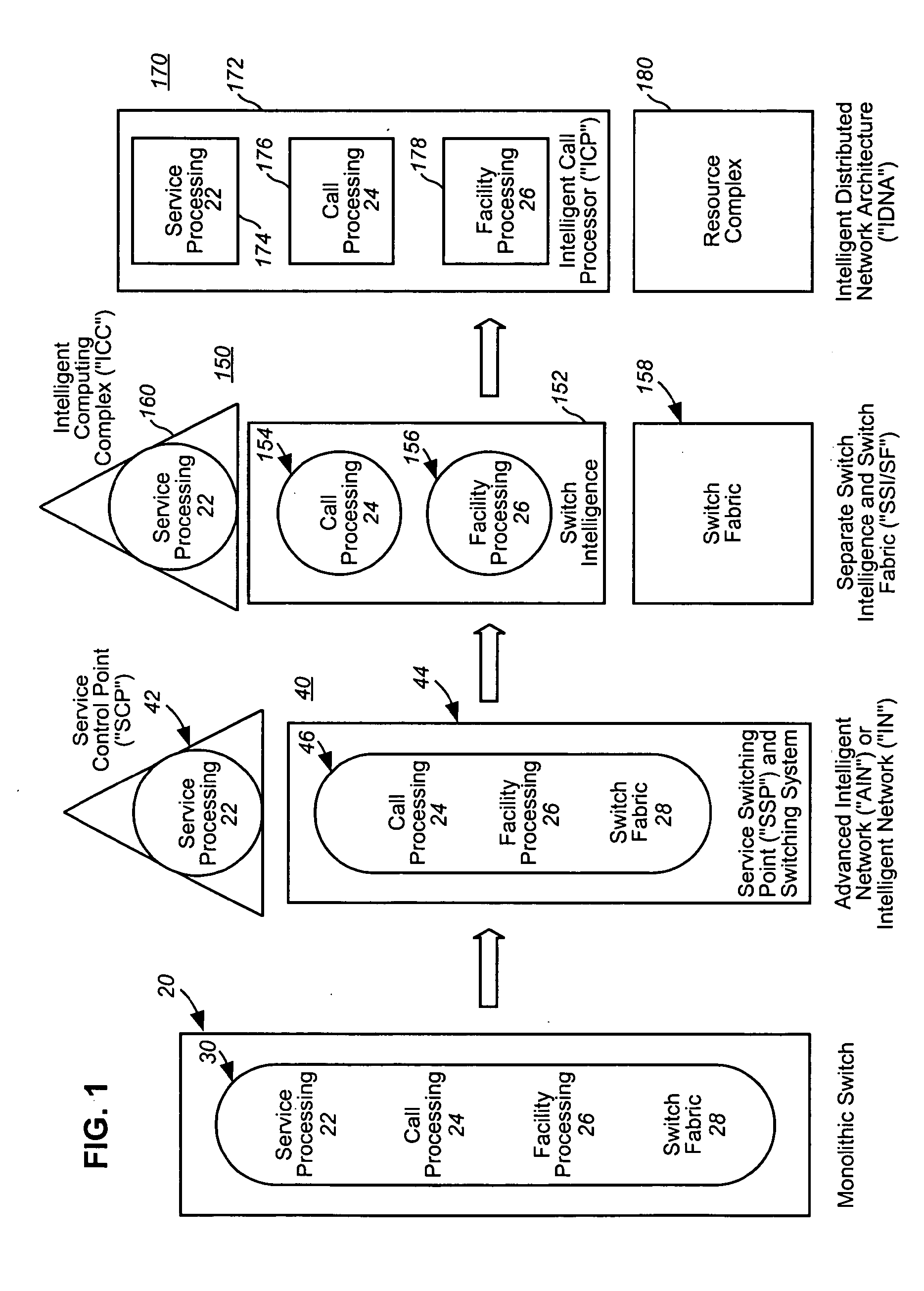Intelligent network
a network and intelligent technology, applied in the field of intelligent network architecture, can solve the problems of increasing complexity, affecting the processing speed of switch processors, and extending the time required to develop, test and deploy new software, so as to reduce the dependency on expensive hardware, avoid the effect of affecting the processing speed of call events, and be ready to adapt to handle call events
- Summary
- Abstract
- Description
- Claims
- Application Information
AI Technical Summary
Benefits of technology
Problems solved by technology
Method used
Image
Examples
Embodiment Construction
The present invention is a comprehensive intelligent network architecture alternately referred to herein as the Intelligent Distributed Network Architecture (“IDNA”) or the Next Generation Intelligent Network (ANGIN”). As described herein, the NGIN architecture is designed to perform intelligent call processing services for any type of call received at a resource complex or switching platform, e.g., switch, router, IP termination address, etc.
As shown in FIG. 1, the Intelligent Distributed Network Architecture (“IDNA”) is denoted generally as 170. The present invention unifies the ICC 160 and Switch Intelligence 152 of the SSI / SF architecture 150 into an Intelligent Call Processor (“ICP”) 172. Unlike the IN or AIN of SSI / SF architectures 40, whose functions are defined in state tables, the ICP 172 contains the service control functions 22, call processing functions 24 and facility processing functions 26 as managed objects in an object-oriented platform, which is symbolized by bl...
PUM
 Login to View More
Login to View More Abstract
Description
Claims
Application Information
 Login to View More
Login to View More - R&D
- Intellectual Property
- Life Sciences
- Materials
- Tech Scout
- Unparalleled Data Quality
- Higher Quality Content
- 60% Fewer Hallucinations
Browse by: Latest US Patents, China's latest patents, Technical Efficacy Thesaurus, Application Domain, Technology Topic, Popular Technical Reports.
© 2025 PatSnap. All rights reserved.Legal|Privacy policy|Modern Slavery Act Transparency Statement|Sitemap|About US| Contact US: help@patsnap.com



